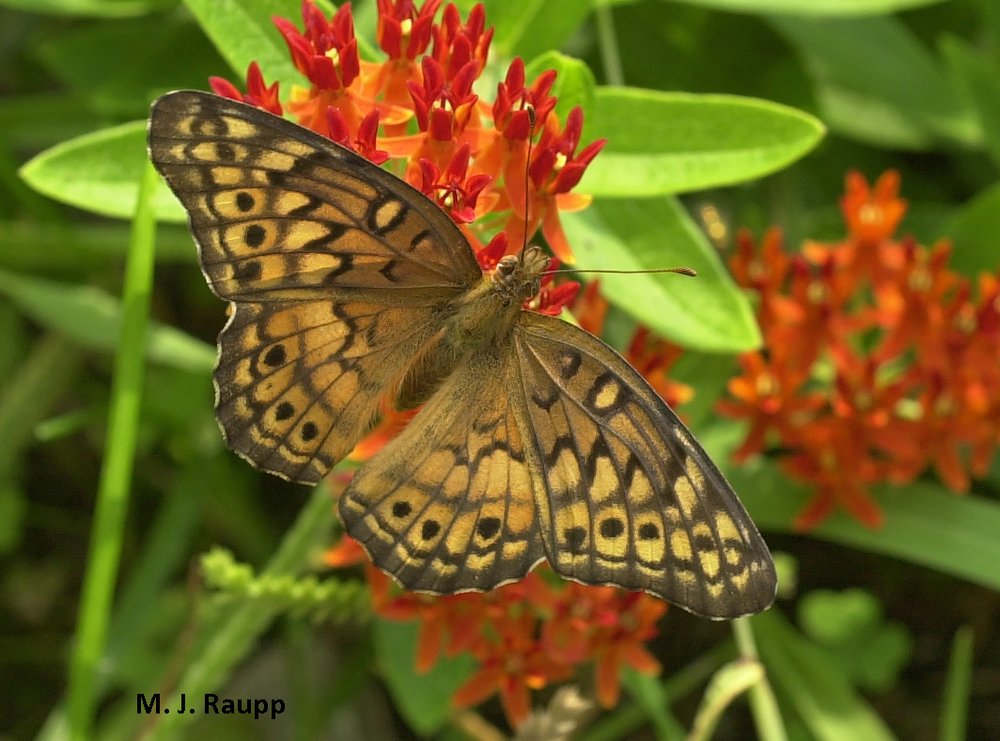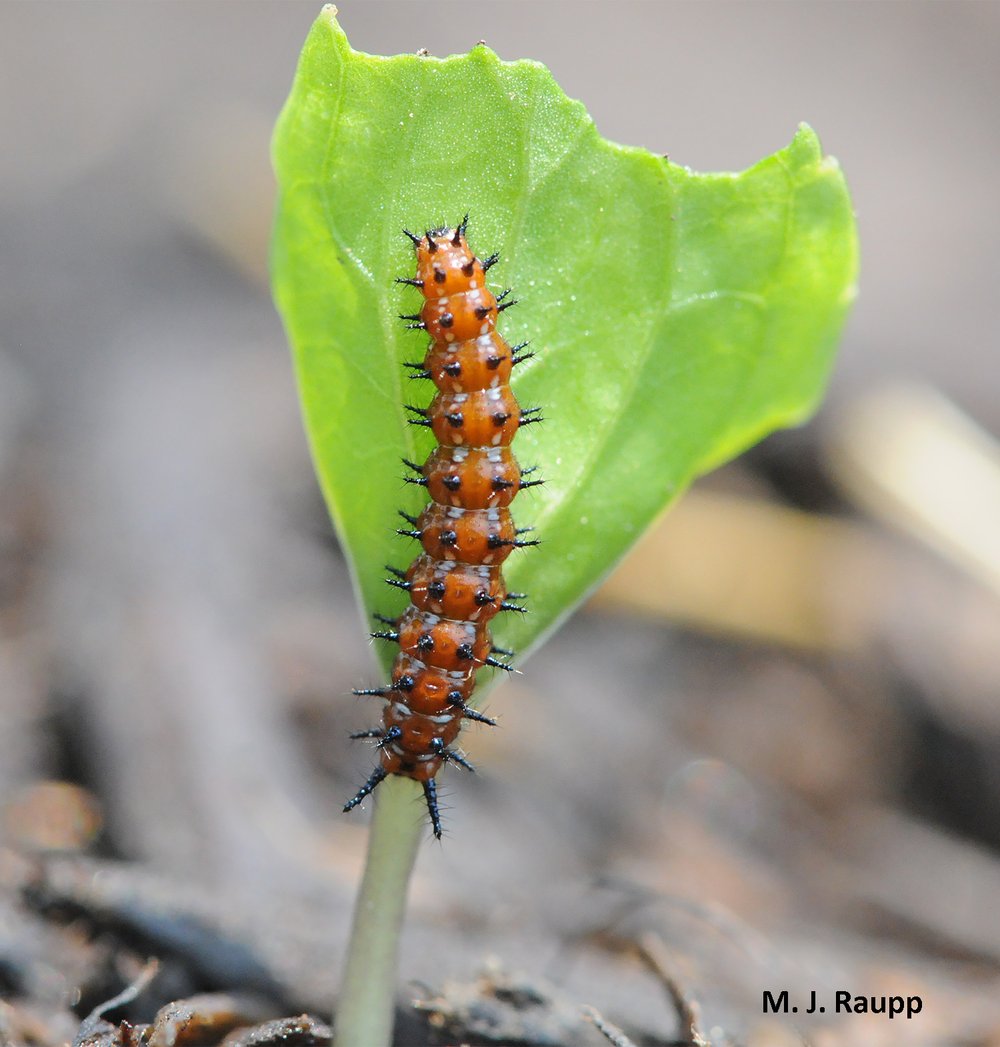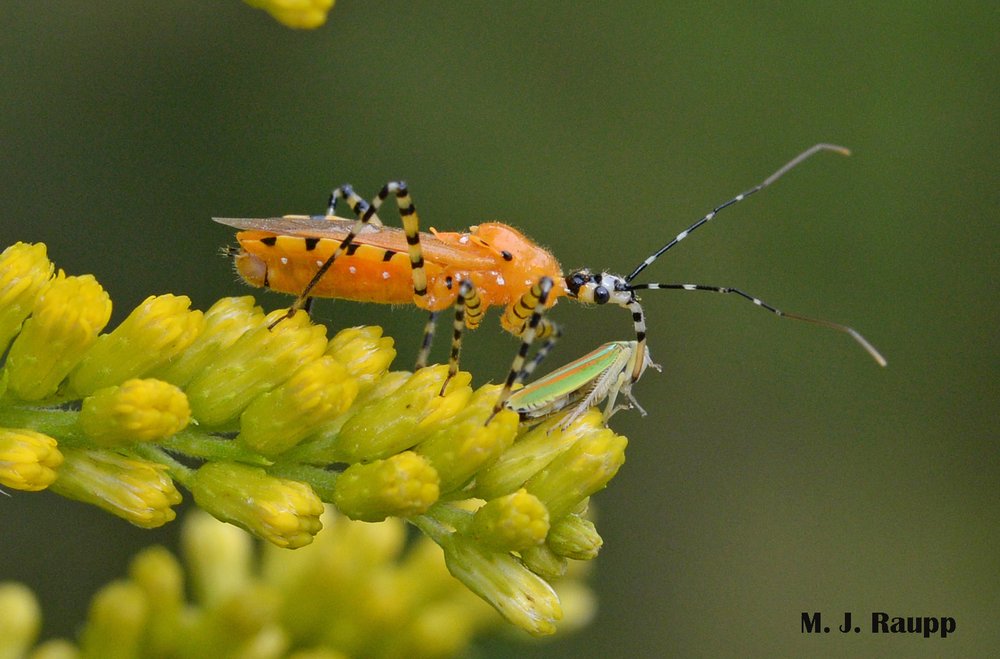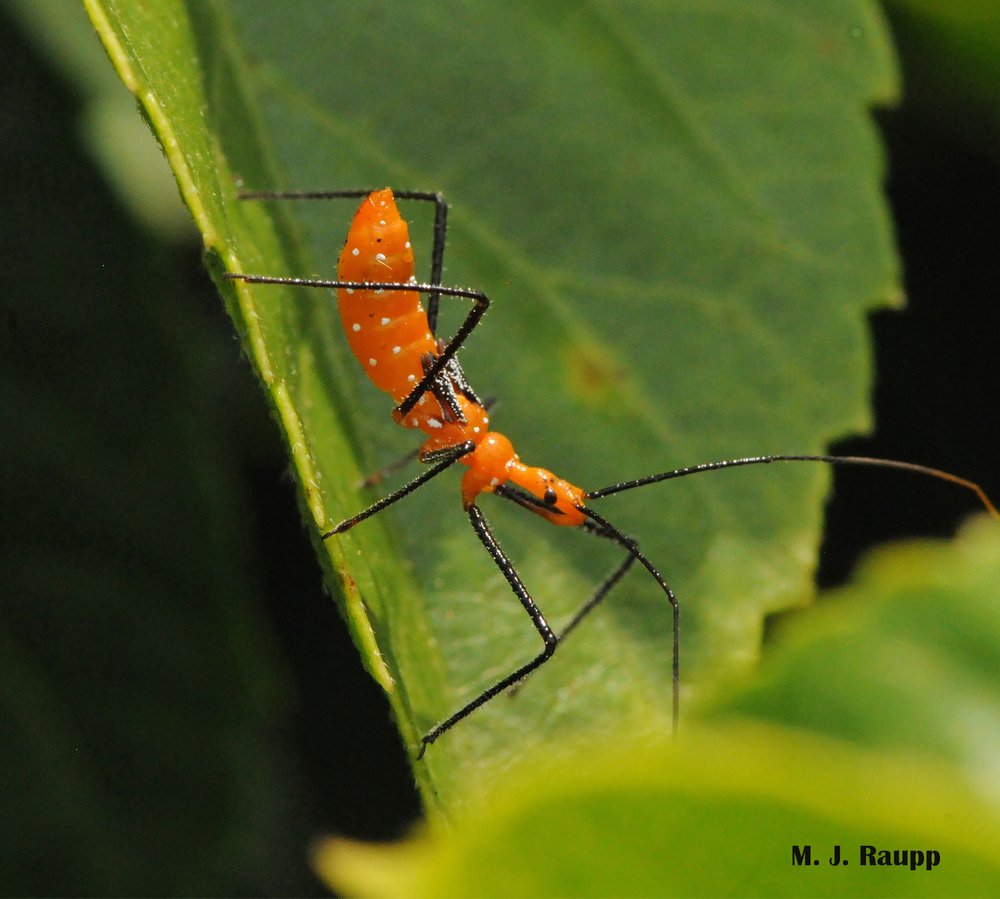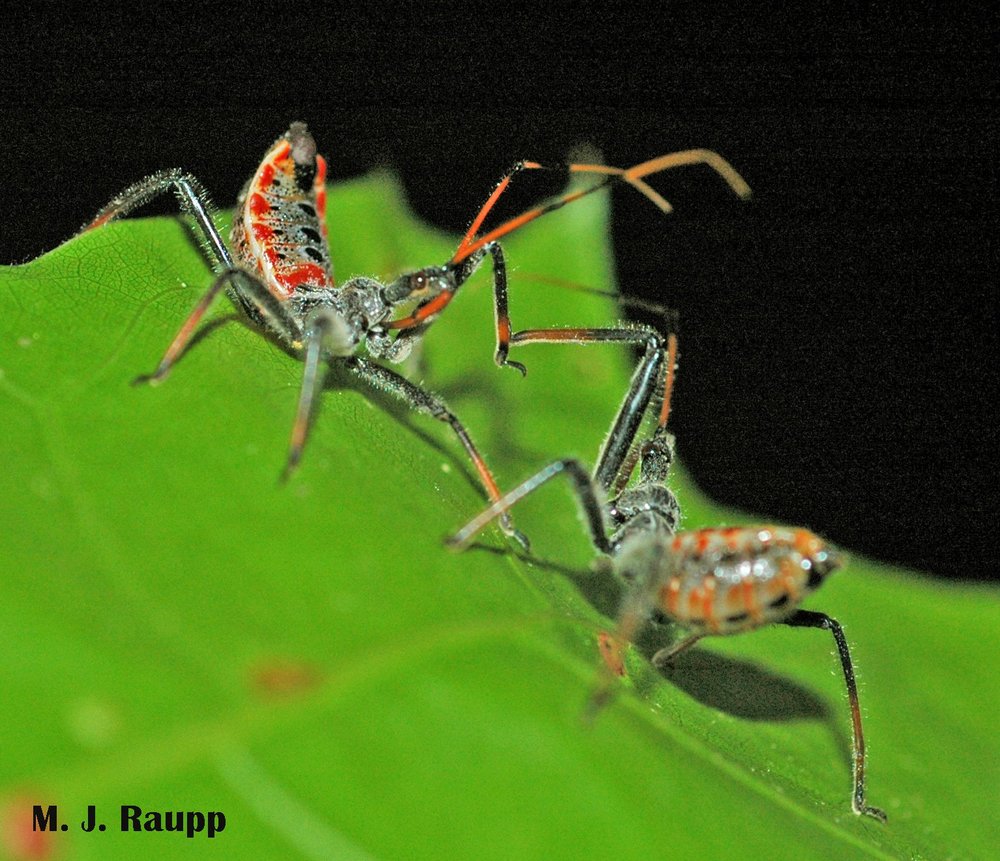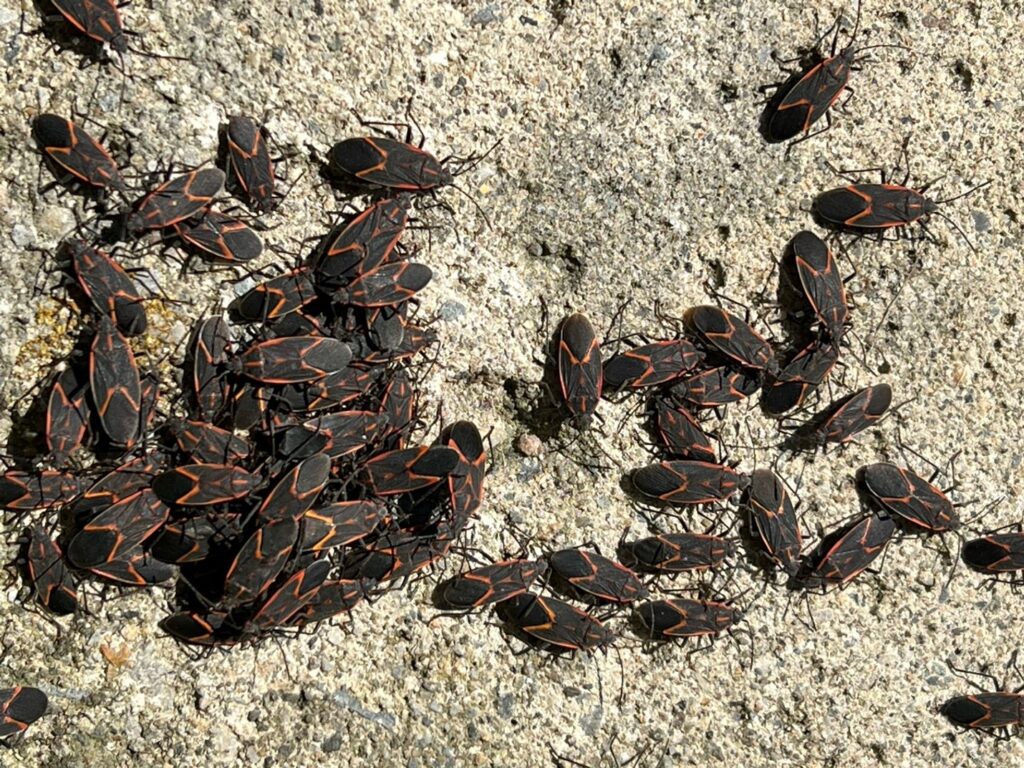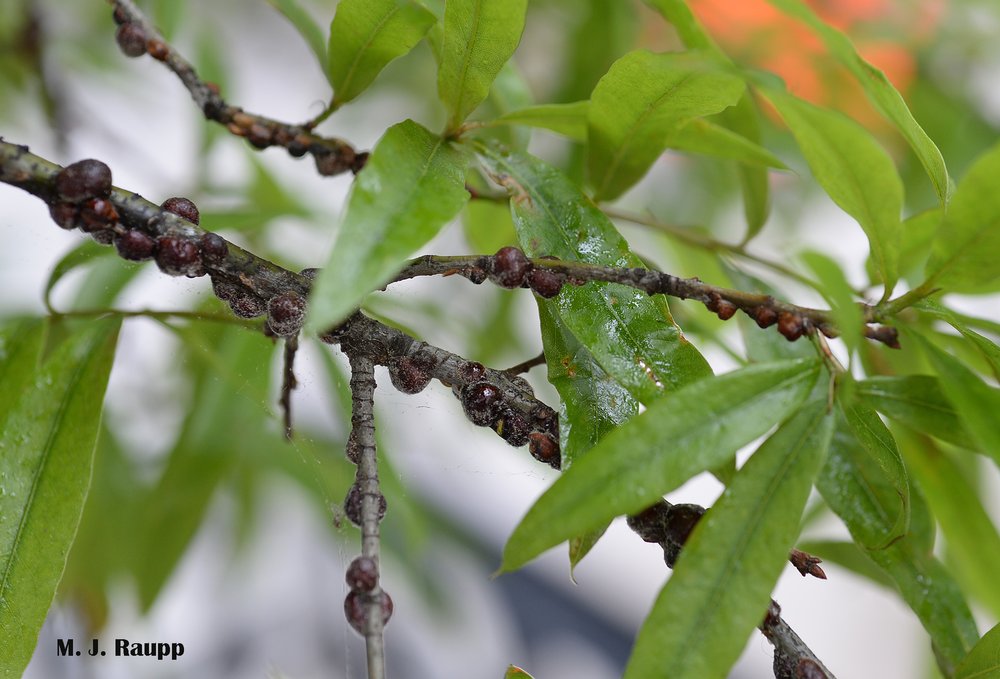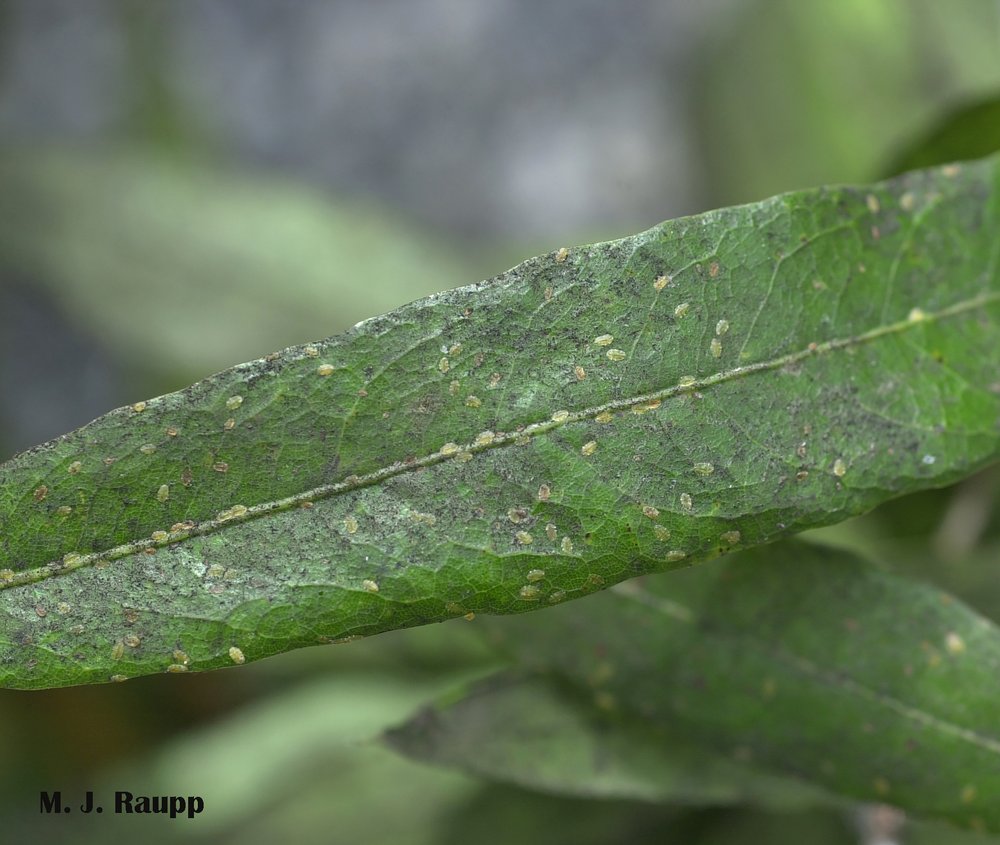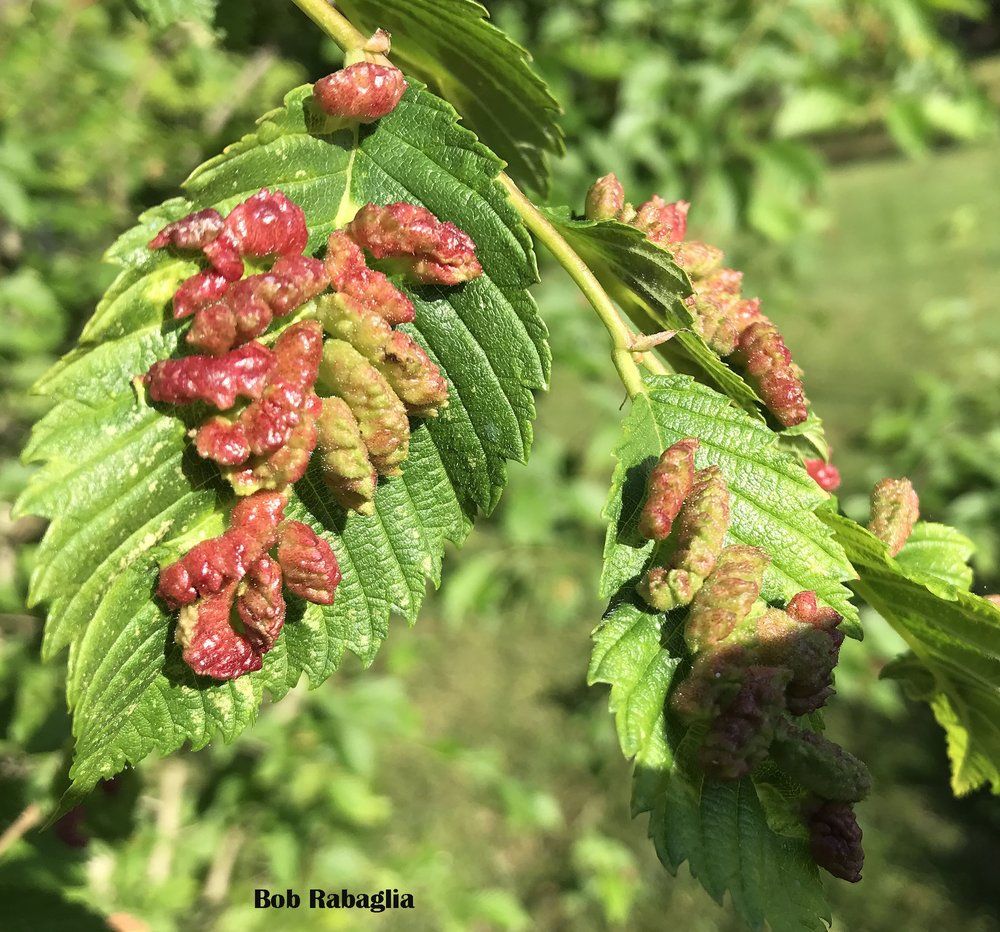Two tiny vampires leave their itchy calling cards along the Potomac: black flies, Simuliidae and no-see-ums, Ceratopogonidae

Whoa! If she drinks any more blood this black fly might explode!
Last week while enjoying record breaking warm weather with a hike along the mighty Potomac River in Mercersville, MD, I was assaulted by two tiny terrors that pack a surprisingly large wallop for their size. In previous episodes we met dastardly Aedes, Culex, and Ochlerotatus mosquitoes equipped with hypodermic-like mouthparts perfect for inserting into small capillaries to obtain blood used by females to develop eggs. Although mosquito bites are itchy, to me their bites pale with respect to the aggravation and burning sensation brought on when legions of black flies and no-see-ums visit my skin.
Black flies use jaws with serrated edges to slash flesh and sever tiny blood vessels. As blood pools in the wound, the black fly laps it up. Only the female black fly has the blood lust. She exploits this rich protein source to produce as many as 800 eggs over the course of her lifetime. Males are the gentler gender and consume nectar from flowers, as do females when not taking blood. With her load of fully developed eggs, the female black fly visits running mountain streams or other fresh water sources and deposits her eggs on rocks, logs, emergent vegetation, or directly into the water. Eggs hatch and larvae attach to rocks and other submerged structures and graze on small plants and animals on the surface of their substrate.
Fast moving streams and rivers are prime breeding sites for black flies. A rock plucked from the river harbors a black fly larva hiding in the vegetation. A series of video clips show the expanding abdomen of the black fly as she feeds. When she is done, my flesh continues to ooze blood from severed capillaries. Watch as an even tinier no-see-um tanks up while feeding on my arm.

Some people will have severe reddish welts and swollen legs that persist for days and weeks following black fly bites.
The wound of the black fly is quite something to behold. While the bite itself is cloaked by anesthetics administered in the saliva of the fly, the aftermath can be quite disagreeable. For many victims of their bite, reddish-purple blood spots appear beneath the skin at the site of each bite as the body reacts to anticoagulants and other allergens injected into the site of the wound. These red welts were accompanied by intense itching that can last several days and may be accompanied by fever, swelling, and nausea. There are reports of domestic animals dying when legions of black flies attack. The direct injury caused by black fly bites is the lesser of the evils visited unto humans by these tiny flies. In several countries in Central and South America and Africa, black flies carry nasty filarial worms capable of invading the human body. They occupy small tumors beneath the skin. In some cases, these filarial worms take up residence in the eye and cause permanent sight loss known as river blindness or Robles disease. Yikes! Glad our Maryland black flies do not carry such diseases.
Just downstream from Mercersville, near historic Harper’s Ferry, black fly populations hit intolerable levels on the Potomac. The Maryland Department of Agriculture and Department of Natural Resources treated a section of the Potomac with a biological control agent, Bacillus thuringiensis israelensis (BTi), to quell populations of black fly larvae developing in the river. This bacterial insecticide is derived from a naturally occurring soil microbe and has been used to mitigate several types of aquatic and terrestrial fly larvae. Government agencies reported that “the treatment may cause temporary discoloration of the water, but it is completely nontoxic and is not harmful to humans, fish, crabs or other aquatic invertebrates.”
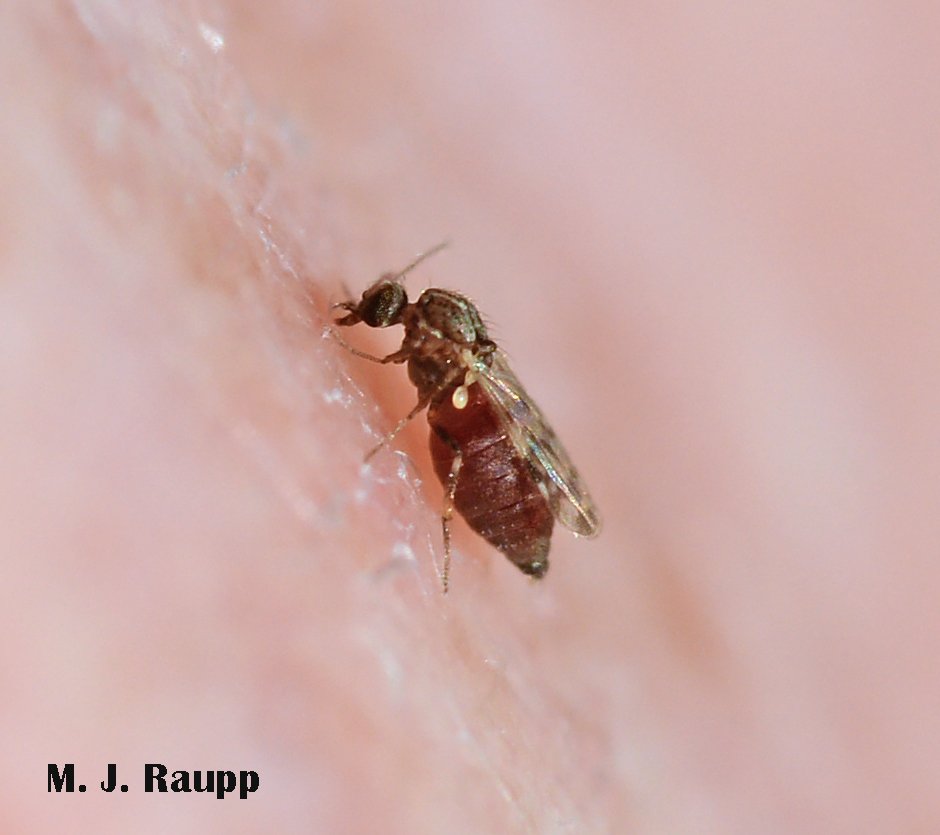
Female no-see-ums gain several times their body weight at each blood meal.
And just how tiny is tiny? Well, black flies range in size from about 1 to 5 mm and sometimes larger, smaller than the width of a tic tac. Our second tiny terror, no-see-ums, a.k.a. biting midges, can be even tinier than black flies at 1-3 mm. Little wonder they are called no-see-ums. While these minute vampires are hard to see, their bite is easy to remember with a characteristic burning sensation. Itching associated with these bites can last several days. Like black flies, females use cutting mouthparts to sever capillaries and sucking mouthparts to imbibe the blood needed to produce eggs. Also like black flies, male and female no-see-ums obtain carbohydrates from plant nectar. Larval no-see-ums are aquatic or semi-aquatic, found in both water and in moist soils near rivers, marshes, ponds, and lakes; tree holes; and decaying vegetation and fruit. In addition to the nuisance they become when abundant, they carry serious diseases of humans and domestic animals in some parts of the world. In Central and South America, parts of Africa, and some Caribbean islands, no-see-ums carry tiny roundworms that infect humans and cause skin lesions. In parts of Africa, Europe, and Asia, a deadly virus called African horse sickness (AHS) is carried by no-see-ums to horses and their close relatives. Fortunately, at this writing, AHS is not known to occur in Maryland or other parts of the US. Lucky us, that for the most part here in the DMV, these tiny terrors remain mostly annoying and not distributors of disease.
Acknowledgements
Excellent references by J. F. Butler (University of Florida) and J. A. Hogsette (USDA) on black flies, and C. Roxanne Connelly on no-see-ums (University of Florida) as part of the University of Florida’s ‘Featured Creature’ series, and M. T. James and R. F. Harwood’s “Herms’s Medical Entomology” were consulted for this episode. To learn more about “The Black Fly Suppression Pilot Program in Maryland”, please visit the Maryland Department of Agriculture website at this link: https://mda.maryland.gov/plants-pests/Pages/Black-Fly-Program.aspx
This post appeared first on Bug of the Week
